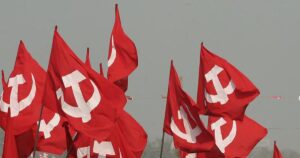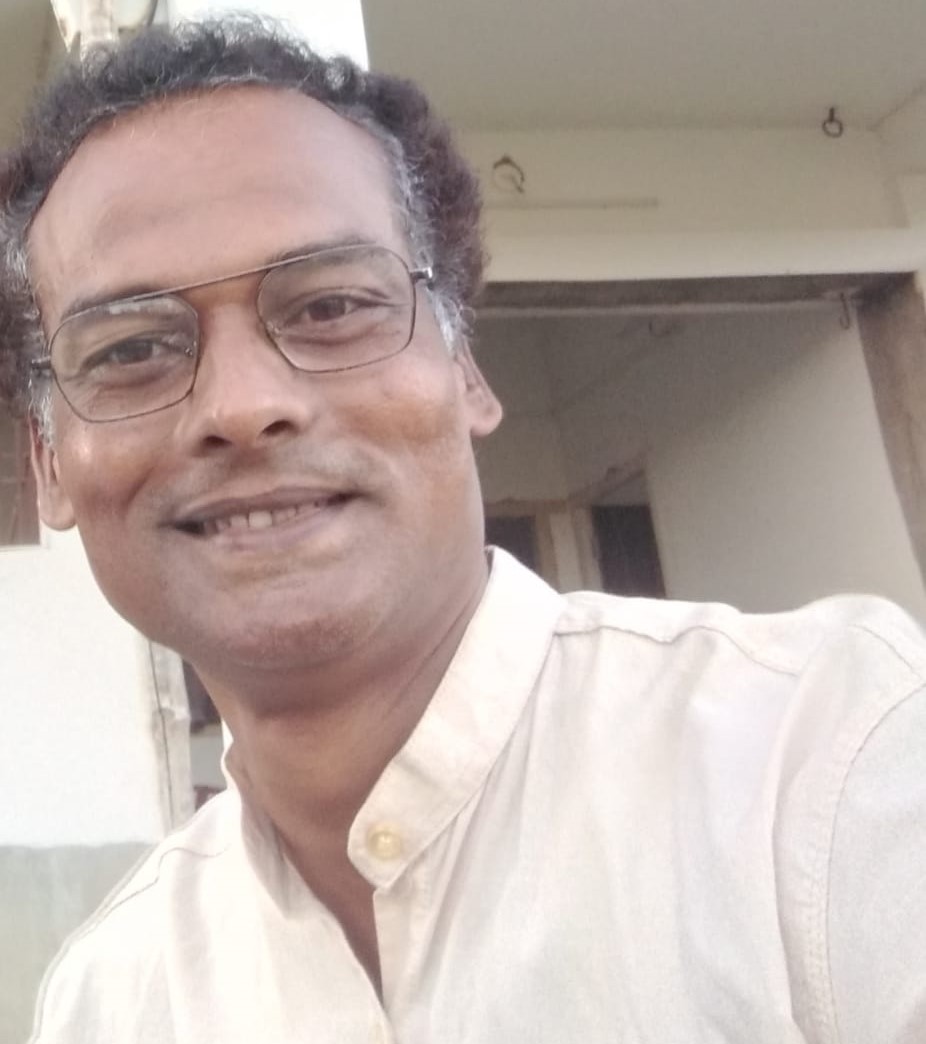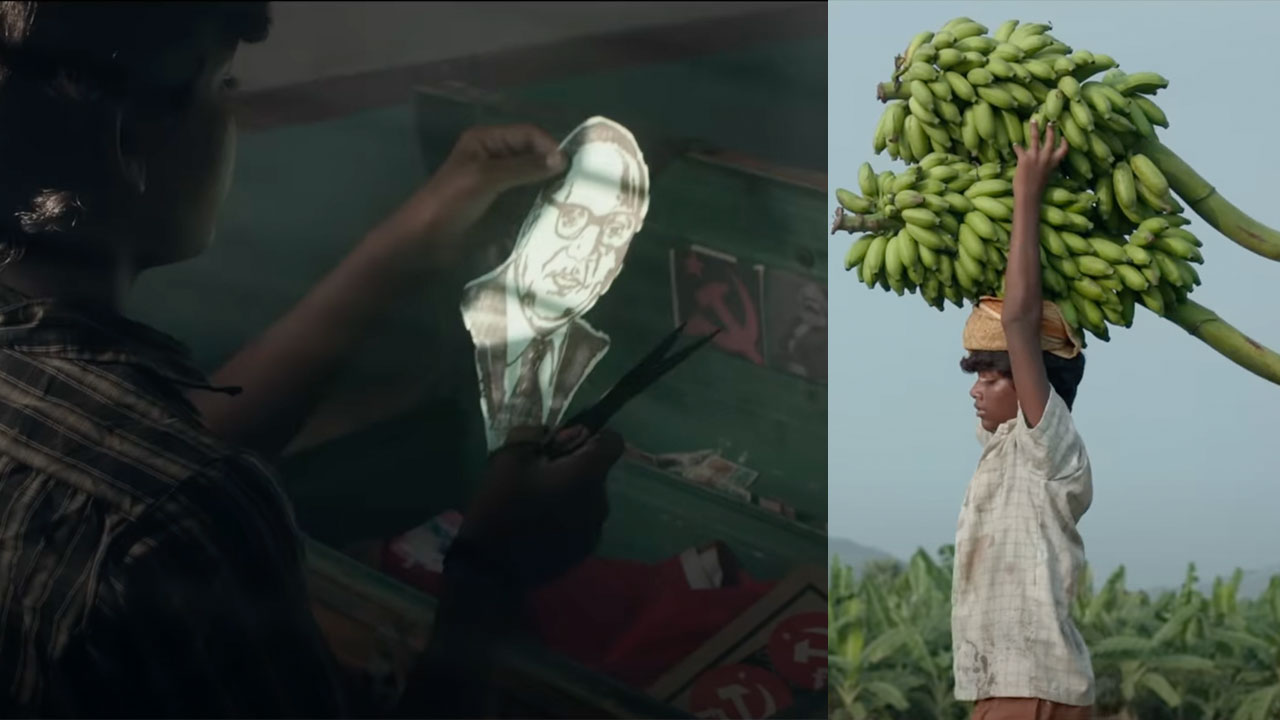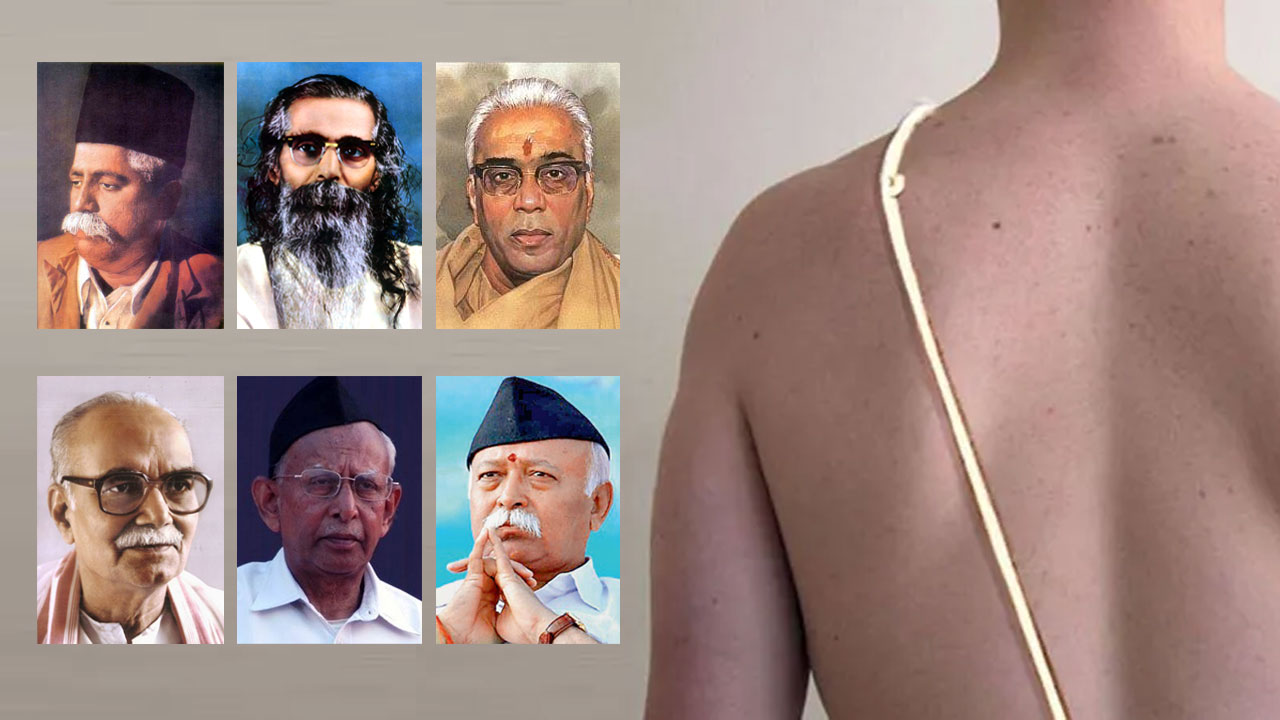The 11th convention of the Communist Party of India (Marxist-Leninist) Liberation [CPI (ML)] was held in Patna from 16-20 February 2023. Among all the states, the CPI (ML) has the biggest presence in Bihar. A souvenir was brought out to mark the occasion. The souvenir underlines Bihar’s glorious heritage of unceasing struggle against centuries-old oppression and injustice. It “recalls with pride” the different phases in the growth of progressivism that made Bihar a stronghold of communist and socialist movements. The souvenir also lists the 10 earlier conventions of the party as milestones in its journey. It recalls the contribution of the leaders and the martyrs who laid the foundations of the communist movement in Bihar and worked for its expansion. It also lists party’s friends and well-wishers from different walks of life, underlining the party’s inclusive appeal.
To sum up, through this 88-page souvenir, the CPI (ML) has tried to rediscover Bihar’s history from its own perspective. In this rediscovery, most of the movements and personalities have been given their due place, but a few have been completely ignored. There is no mention of Triveni Sangh, which launched a social movement in Bihar in the 1930s and 1940s. Is this inadvertent or is it the result of an ideological conflict?
The souvenir says that Sahajanand Saraswati was the pioneer of the CPI (ML) movement in Bihar. The four others listed as its ideological forefathers – Master Jagdish, Subrat Dutt (Jauhar), Vinod Mishra and Ramnaresh Ram – were directly associated with the CPI (ML). Declaring Sahajanand Saraswati as the founder of the Kisan Sabha Movement, the souvenir claims that CPI (ML) was the true inheritor of his heritage. The party, thus, is looking for its roots in the struggles of the Kisan Sabha.
The CPI (ML) claims that a document titled Bihar Ke Dhadhakte Khet-Khalihan Kee Dastaan (The tales of the blazing fields and barns of Bihar) was the first true and accurate evaluation of Sahajanand Saraswati’s place in history. “This document says that the evolution of Sahajanand’s thinking perfectly mirrored the changes in the ways and means of the peasant struggle in Bihar and the process of revolutionization of the Kisan Sabha.”
In the preface to “Bihar ke Dhadhakte Khet-Khalihan kee Dastaan”, Vinod Mishra writes, “Although the Kisan Sabha Movement had begun under the aegis of the Congress, it eventually broke away from the party and embraced the pro-people revolutionaries. A substantial chunk of the Kisan Sabha activists later joined the Communist Party. History testifies that caste-based polarizations vanished during the Kisan Sabha Movement. During the Freedom Struggle, neither the anti-Brahmin Movement nor Ambedkarite Dalit Movement nor Jagjivanram’s Harijan Kalyan could garner much support in Bihar. But at the same time, the CPI and the socialists succeeded in building a strong base for themselves.”
In the 1930s, even as the Kisan Sabha Movement was gaining traction in Bihar, Triveni Sangh (1930-1945), representing an ideology that was dead opposed to caste hegemony and Brahmanism, was also active. This militant ideological stream did make its presence felt. The Congress and the Congress-supported nationalist newspapers branded the Triveni Sangh as a [British] government- and landlord-sponsored organization. Swami Sahajanand and Rahul Sankrityayan were also opposed to the Triveni Sangh. Kisan Sabha considered Triveni Sangh a casteist organization. Even Pandit Jawaharlal Nehru, while addressing public meetings in Arrah and Patna as part of the campaign for the 1937 elections, criticized Triveni Sangh. “He expressed surprise over the rise of political communities [like Triveni Sangh]. He said that he was not comfortable talking about caste, and urged everyone to step forward and work in national interest.” (Bihar Mein Samajik Parivartan Ke Kuchh Aayam, Prasanna Kumar and Shrikant, p 122).
The truth is that the Congress, which was leading the Freedom Struggle, was under the thumb of the upper castes and was divided into various caste factions. All the top Congress leaders of Bihar were associated with the organizations of their own castes. Swami Sahajanand had also begun his public life with a caste organization.
Clearly, CPI (ML)’s version of history does not take into account the Triveni Sangh and its significant struggle. It sidesteps the issues of caste and the anti-Brahmin movement. The Kisan Sabha Movement, too, had skirted the caste question. At the time, even the land revenue system was not caste-blind. It had caste-based variations. The Backward and Dalit castes were subjected to an additional levy. Triveni Sangh called the caste-based land revenue system ‘Chhipa lagaan’ (hidden land revenue). Dalits and Backwards formed a big chunk of the sharecroppers and farm labourers. They were subjected to social indignities and oppression. The Kisan Sabha circumvented this issue. The Kisan Sabha Movement was pro-Savarna. Its agenda suited the interests of the ‘Kaymi Raiyats’ – the farmers who were tilling the same piece of land for 10 years or longer. The Kisan Sabha could not forge ties with the Backwards and the Dalits because its agenda ignored caste-based discrimination and humiliation and also because of the social background of its leadership. In this context, an incident related to Triveni Sangh activist Kesri ‘Master’ is an eye-opener. “By the time Kesri Master reached Swamiji’s ashram at Bihta in Patna district, it was already dark. He saw from a distance that all those who surrounded the Swami were from the Bhumihar caste. Bewildered, this backward-caste leader turned back and disappeared into the darkness.” (Bhojpur, Bihar Mein Naxalwadi Andolan, Kalyan Mukherjee and Rajendra Singh Yadav, p 32)
Urging the people to remain wary of charlatans, Chaudhary J.N.P. Mehta, writing in Triveni Sangh Ka Bigul, makes a revealing comment on the social and caste character of the Kisan Sabha: “Haven’t you seen that those whose forefathers considered tilling the land a sin, are claiming leadership of the Kisan Sabha? And those at whose doors the Untouchables are beaten up have become devotees of the Dalits. When they take part in the Sabha’s meetings, they wear dhoti made of khadi and when they have to shake hands with the Collector, they wear a hat and pants. The father is a devilish landlord and the son is the leader of the Kisan Sabha. The farmers living in their territory are crushed like grains in a millstone. If this is not running with the hare and hunting with the hound, what is? So, be on guard.”
CPI (ML) may be claiming that the absence of caste polarization during the Kisan Sabha movement was an achievement. However, the basic character of the Kisan Sabha was akin to that of a caste organization. “Just as the Congress [in Bihar] was dominated by the kayasthas in its initial years, the Kisan Sabha was dominated by the Bhumihar Brahmins – may be to even a higher extent. There was hardly any other organization (barring caste organizations) that was so heavily dominated by any one caste.” (Bihar Mein Samajik Parivartan Ke Kuchh Aayam, Prasanna Kumar, Shrikant, p 158).
The Triveni Sangh movement rose from the other end of the social spectrum. The lack of dignity and respect arising from the caste system was its main concern. But the movement, born in 1933, had faded out by 1945. The oppressed communities were drawn to the Left but at the time, just like the Kisan Sabha, the Communist Party was also dominated by the Bhumihar Brahmins. The CPI grew from the ground prepared by the Kisan Sabha while Triveni Sangh’s space was taken by M.N. Roy’s Radical Democratic Party (RDP). The RDP replaced the Triveni Sangh and was in existence for a long time as a party of the Backwards. Later, Ram Manohar Lohia-led Socialist Party took the place of RDP.
The sparks of the Naxalbari movement that began in the late 1960s entered Bihar. The movement was said to have been in its last stages and it floundered as it made its way through Bihar before finally striking roots in Bhojpur. The first phase was over. Vinod Mishra writes, “Suddenly and very unexpectedly, we started receiving encouraging signals from Bhojpur in the then central Bihar and from Patna. The struggles in Bhojpur and Patna, with deep roots in the contemporary social conditions, were of a new kind and both these places witnessed the rise of a new kind of local leadership.” (Introduction to Bihar Ke Dhadhakte Khet-Khalihan Kee Dastaan).

What needs to be explored is whether this was “unexpected” and had “deep roots”? Inspired by Naxalbari, Jagdish Mahto (Master Saheb), Ramnaresh Ram and Rameshwar Ahir laid the foundations of a new kind of struggle. On 17 February 1967, Jagdish Mahto was brutally beaten up by the feudal lords for objecting to irregularities in the polling for Vidhan Sabha elections. “Hurt and angry, Jagdish Mahto decided that very day that the war that had ended in the 1930s would have to be revived.” (Bhojpur, Bihar Mein Naxalwadi Andolan, Kalyan Mukherjee, Rajendra Singh Yadav, p 42)
Shahabad was the focal point of the Triveni Sangh’s bitter battles centred on the issues of respect and dignity. It brought the issue of caste centre stage. The new struggle that began in Bhojpur was a revival of Triveni Sangh’s movement. According to Kesri Mahto, an old hand of the Triveni Sangh movement, “Had we not been there, the Naxalbari movement could not have begun in the district.” (Bhojpur, Bihar Mein Naxalwadi Andolan, Kalyan Mukherjee, Rajendra Singh Yadav, p 42)
On 14 April 1970, Arra witnessed a huge demonstration, unprecedented in its history, to mark the birth anniversary of Ambedkar. Led by Jagdish Mahto, Rameshwar Ahir, Latafat Hussain and others, the processionists chanted “Harijanistan lad ke lenge” (We will fight to get Harijanistan). Then, on 23 February 1971, Shivpujan Singh, a henchman of the local landlord was killed in Ekvari, in Sahar. Jagdish Mahto, Rameshwar Ahir, Bhikhari Kahar, Maharaj Mahto and Singhasan Chamar were arraigned as the accused. The struggle had begun. Later, the leadership of this movement came into contact with CPI (ML). The battleground of this new struggle was the same as that of the Triveni Sangh. It is clear that what happened in Bhojpur in 1970 was only an echo of the trumpet sounded by the Triveni Sangh decades ago.
We have so far tried to identify the roots of the CPI (ML)’s dilemma vis-à-vis history. And it is apparent that the exclusion of Triveni Sangh and its heroes from the party’s chronicles is not inadvertent. It is in line with its sense of history, which has always ignored the issue of caste. It was hoped that the party talking about building “India of Ambedkar’s dreams” and sending out positive signals in consonance with the changing times, would also amend its sense of history.
Let us talk some more about the “mistake and amnesia”. “Sangharsh ke Kshitj” (The horizon of struggle) is an important chapter of the souvenir. Of the 21 personalities it lists, only six are non-Savarnas – one a Dalit and five from the backward castes. There is a name from the minority community, too. However, Adivasis and Pasmandas are conspicuous by their absence. The horizon is crowded by the Savarnas. This has created an impression that the Dalits, Adivasis, Backwards, Pasmandas and women did not join the struggles and kept away from them. The socially dominant are dominant even in the struggle against their own dominance! Heroism has become the sole privilege of the Savarnas. Those who shed their sweat and blood, those who laid down their lives – they are relegated to the footnotes of history. The party that claims to represent the sociopolitically marginalized sections, itself marginalizes the marginalized in its account of the past. This is not an irony of history. The problem lies in their sense of history.
Not accepting that caste is an issue obfuscates the identity of its victims and leads us to forget their struggles. It also creates a bias towards dominant groups in how you look at the past and the present, and alters the meaning of heroism, pushing the real heroes into oblivion.
Moreover, the possibility of such a “horizon” impacting the thought process of the struggling marginalized majority cannot be ruled out. It may make the non-upper-caste feel indebted towards the upper-caste. The oppressed communities may feel that they lack heroes and the virtues that go into making them. That means pushing the oppressed even further back. This is a way to condition the people to the brahmanical Varna-Caste system and make them accept that the upper castes led them in the past and are leading them in the present.
However, martyr Jagdeo Prasad has found a place in “Sangharsh Ke Kshitij”. This is courageous in a way. But the CPI (ML) has fitted Jagdeo Prasad into its own mould. For instance, the souvenir says that in the evening of his life, Jagdeo Prasad was influenced by leftism. He has been quoted as taking a resolve in a speech that he would “turn Bihar into Sahar”. It is true that just before his martyrdom, he was repeatedly calling for “turning Bihar into Sahar”. He wanted to spread the new consciousness arising in Sahar – the consciousness that demanded dignity and equality, the consciousness that was opposed to the dominance of the upper castes and their oppression of the Backwards and the Dalits – to the entire state. According to the souvenir, those in the know of the sociology of Bihar say that as soon as Jagdeo Prasad began turning towards the Left for transforming the system, he was murdered. It may be mentioned here that Jagdeo Prasad’s movement, launched in 1974, was distinct from the then ongoing movement led by Jayaprakash Narayan. His was a no-holds-barred battle against upper-caste hegemony and Brahmanism. Documenting the real reason behind his murder is important for true evaluation of his martyrdom and his legacy. Jagdeo Prasad’s scalding tone and tenor were not that of established left-wingers. They were of a different kind. He was against the leftist’s surrender before Brahmanism and stood for freeing the leadership of the left from the clutches of the upper castes.
The long and the short of it is that the contents of the souvenir do not indicate that the CPI (ML) is changing its stance on the issue of caste.
In the past, the limitations of the Left’s historical perspective has led to problems in assessing the role of Kisan Sabha Movement and Sahajanand Saraswati. The party had a flawed understanding of the issue of caste and ignored the historic movement launched by Triveni Sangh. The souvenir does not indicate that any course correction has been made.
It is being said that the CPI (ML) is in the process of changing its stand vis-à-vis issues related to social justice and Ambedkar. Its steadfast loyalty to the Mahagathbandhan in Bihar and its vocal advocacy on social-justice issues are definitely deeply satisfying. But do these changes represent an ideological reorientation or are merely tactical moves? In this context, it would be in order to discuss the draft resolution passed in the convention.
- The draft resolution says that putting an end to social oppression and the elimination of caste were the key revolutionary goals of the CPI (ML). Elimination of caste is not something that can be achieved just like that. The resolution does not detail any concrete programme for achieving this goal. The resolution declares that India is an agricultural, backward, capitalist society, which is being pulled back by the deep-rooted remnants of feudalism and the hangover of its colonial past and which is groaning under the loot by global capital and imperialism. Clearly, caste is not the prime, but a secondary factor for the party.
- The draft resolution says that the corporates, in cahoots with the feudal remnants, have a decisive presence in the socio-economic-political order of India. The resolution talks about the Indian state in a caste-neutral manner. It says that the Indian state is led by the pro-imperialist bourgeoisie, in alliance with landlords and kulaks. It does not underline the brahmanical character of the state and the upper-caste dominance in almost all institutions of the state. It says that the legal, juridical and administrative superstructure and the armed forces in India are still largely of colonial vintage.
- To bring about a people’s revolution, the draft resolution calls for building a people’s front led by the workers. The classes for forging the people’s front will have to be identified through a class analysis and their class character will have to be determined. The CPI (ML) does list elimination of caste among the goals of the people’s revolution but its class analysis is caste-neutral. Caste is not just an external blot on the face of Indian society that can be wiped off in a jiffy. It has found its way into every strand of society. In India, the character and the behaviour of different classes is not caste-neutral. Within every class, being an upper-caste makes a difference – it gives you some privileges and a distinct status. That changes their character and behaviour. If elimination of caste is your goal, caste-neutral class analysis is problematic.
- The draft resolution notes that a majority of Savarnas still form the core social base of the Bharatiya Janata Party (BJP). While discussing the perspective, orientation and tasks of an anti-Fascist resistance, it says that the Ram Mandir campaign marked the BJP’s most aggressive phase in its rise, catapulting the party to power in several states in north and west India. It claims that the CPI (ML) had rightly characterized the rise of the BJP riding on the frenzy of the rath yatra, as communal Fascism. The CPI (ML) says that the post-Emergency period witnessed some expansion of social inclusion and democratic decentralization through partial implementation of the Mandal Commission recommendations and institutionalization of the panchayati raj system. But with the adoption of the neo-liberal policy framework since the early 1990s, social and economic inequality has been again on the rise and democratic rights have been subjected to steady erosion. But it does not say that this reactionary upsurge is also meant to counter the Mandal-Bahujan upsurge. The Rashtriya Swayamsevak Sangh (RSS), on the other hand, had termed the Mandal upsurge as “Shudra Revolution” and had underlined the challenge of combating it. The draft resolution undermines the brahmanical dimension of Fascism and projects communalism as the main culprit, whereas Brahmanism is at the root of Fascism. Communalism is the tool and the Muslims end up as fodder for consolidating Hindu identity and unity. Without doubt, the rise of Fascism is linked to neo-liberal economic policies and corporate plunder. But it is also closely tied to Brahmanism and the endeavour to re-establish the varna and caste system.
- The draft resolution calls upon the communists as champions of a strong democracy and radical social transformation to be ready to wage a thorough, protracted resistance to give a fitting rebuff to the fascist offensive. Listing the tasks ahead it says that Ambedkar had described the Constitution as the top dressing of democracy on an undemocratic soil. But Ambedkar had also identified caste as the biggest impediment to modern India and called for its complete annihilation to ensure social equality and liberty. That was precisely why Dr Ambedkar had described Hindu Raj as the greatest calamity for the country. The CPI (ML) has failed to answer the questions related to the issue of caste. Breaking the stranglehold of caste involves adopting a new perspective and taking on the challenge of altering the understanding of “class” in the Indian context. The draft resolution does mention Brahmanism but it fights shy of identifying the caste groups that have only nominal rights and others that enjoy privileges. It does not use the word “upper castes” or talk about their dominance. Caste – the biggest impediment in the path of building a modern India – finds few references and that too, at the end of the paragraphs. Dr Ambedkar has only been quoted. The draft resolution expresses regret that the electoral strength of the Left camp has also suffered huge erosion at a time when the BJP has reached its peak. However, it adds that the erosion in the electoral strength does not, however, signify any ideological-political irrelevance of the Left, noting that the electoral successes of the CPI(ML) in Bihar has opened new possibilities of Left resurgence in keeping with the demands of the present situation. This statement is contradictory and is called verbosity in the communist lingo.
- CPI (ML) was undoubtedly associated with the Naxalbari movement. But it won national and international recognition through its struggles in central Bihar (when it was still undivided). It was the party’s struggles in Bihar in the 1970s and 1980s that justified its existence. The draft resolution has nothing to say on this aspect and does not initiate discussion and discourse on the action plan for developing a new model for struggle in step with the times and for gaining ground. It only hopes to gain ground through routine programmes and anti-fascism mobilization.
- To sum up, CPI (ML) needs to overcome the ideological and structural impediments discussed above. It will have to think afresh and transform itself. There is a need for a relook at the history of India, especially Bihar, and for redefining its heritage. The CPI (ML) would have to accept the challenge of developing an anti-brahmanical dimension to its activities, taking initiatives on the broader issues of social justice and leading the political streams championing the cause of social justice. The party’s primary social base comprises the Bahujan and it is the Bahujan who can help expand its base. The leadership of the party and its social base come from different sections, and the incompatibility it creates needs to be addressed. Members of the oppressed communities do have a presence in the leadership units but they lack authority and are not known for their decision-making. They are not at the centre. They are either sitting next to the centre or standing at the back.
(Translation from the original Hindi by Amrish Herdenia)





